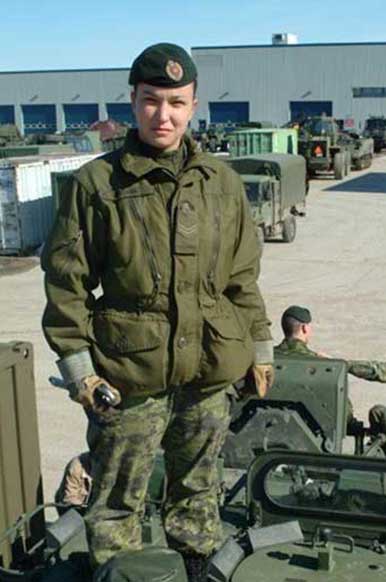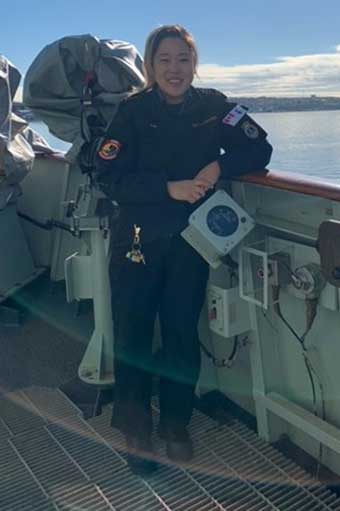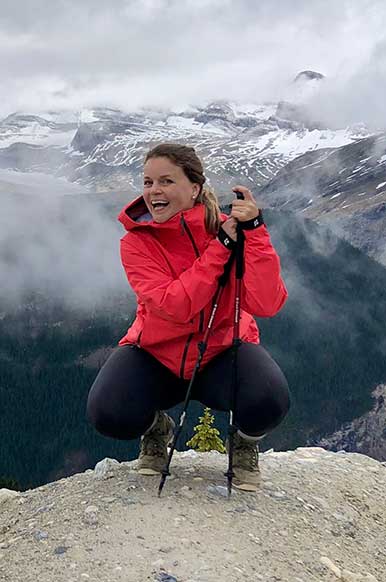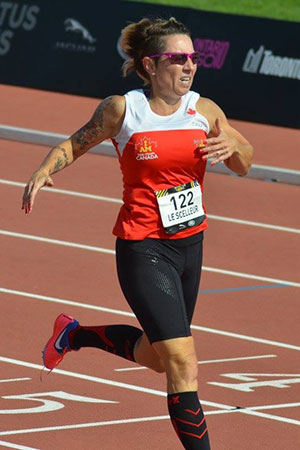Captain (Ret’d) Hugh Egener
From soldier to soapstone bear sculptor – when Hugh Egener decided he was ready to transition out of the military life, he had already taken an interest in the arts. What started as a hobby soon became a second career.
Egypt

Joined
1972
Postings
- 1972-1974: CFB Esquimalt, BC
- 1975-1978: Lord Strathcona’s Horse, Calgary, AB
- 1978-1987: Royal Canadian Dragoon, Petawawa, ON
- 1987-1999, 2003-2010: Training and Development
Deployments
- 1977-1978: Egypt
- 1978-1981, 1984-1986: Lahr, Germany
Young, physically fit and in his first year of university, Hugh Egener seemed like a natural fit for the Canadian Armed Forces (CAF). He originally intended to join the RCMP to help pay for his education. After receiving a firm “no” from them, he walked past the CAF recruitment office. Recruiters were so convincing that he enlisted.
Egener served in the Navy from 1972 to 1974, but he quickly switched to the Armoured Corps after deciding the Navy lifestyle just wasn’t for him. It’s with the Strathcona Regiment in Calgary that he had his first real-life encounter with bears and northern wildlife in the high Arctic.
During the summer of 1977, he led 30 soldiers to establish four survival cairns around Sachs Harbour, Northwest Territories. Flying low overhead on a recce, he was mesmerized by the view of a mother polar bear, her two cubs, and musk ox herds. Little did he know that this experience would eventually become a major source of inspiration later down the road.
“Within the Armoured Corps, I was known for producing books, drawings of our time in training, even caricatures. When I went up into the high Arctic, it was my first exposure to wildlife and Inuit art,” he explained. So when, years later, he was offered a piece of soapstone from a family friend, he sat down and started carving. “I took it home and went on YouTube. I researched carving on YouTube.”
Not long after returning from the Northwest Territories, Egener went on a hotter mission in a much more crowded place. In December 1977, he served in Egypt as the Aide-de-camp to the General of the second United Nations Emergency Force (UNEF II). Canadians who served in the UNEF II helped to implement and maintain a ceasefire after Egypt and Syria attacked Israel with the help of other Arab nations, leading to the Yom Kippur War of 1973.
You go into Cairo, Cairo is a city of 11 million people. No traffic lights. Camel herds going down the main street. It’s a totally different world.
The culture clash and the fast-paced environment of working for a general made this experience a career highlight. “I think the whole time there, the experience… You go into Cairo, Cairo is a city of 11 million people. No traffic lights. Camel herds going down the main street. It’s a totally different world. I had to do all the planning for the General. Then, we’d go into Tel Aviv or Jerusalem. There was certainly a lot of cultural, interesting things.”

Kneeling soldier-“Thinking of home” – A ceramic (clay) sculpture by Hugh Egener
Three days after he returned from Egypt, his wife gave birth to their first child. Egener considers himself incredibly lucky to have arrived in time. “I always say to a lot of people, I’m one of the rare soldiers that was there for [the birth of] all four kids. Most people were always away. For me, everything just seemed to work out perfectly and I’d be there.”
Egener transferred to the Royal Canadian Dragoons in 1978. He spent a total of six years split into two postings in Lahr, Germany, which ended in 1987. While in Canada between postings, he worked in training and development.
In 1999, after serving for 27 years, he released to pursue an opportunity in the private sector. Four years later, at age 54, he re-enlisted after the defense contractor finished the project he had been hired for. While definitely uncommon, he felt this was the right decision at the time. “They had just raised the retirement age from 55 to 60. I had a comrade who convincingly told me they could use my skills. As the sole bread-winner with four kids, it was a no brainer.”
Too many suffer in retirement because they don’t have an activity or hobby that keeps them busy and stimulates their mind.
When he retired for good from the CAF in 2010, right then, he knew he needed a plan. “Too many suffer in retirement because they don’t have an activity or hobby that keeps them busy and stimulates their mind. Just before I retired I started to take classes in sculpting clay and then signed on with a mentor.”
Fast-forward just over a decade to now, his career has bloomed into a true second calling. Now a resident of Nakusp, British Columbia, in the Kootenay region, a bronze bear he sculpted adorns the main street of the village after he won a local competition. He works in his own studio there.
Lately, Egener has been working with the mayor of Nakusp and a coordinator from Soldier On to open up a wellness centre that would be dedicated to Veterans with physiological and psychological injuries. They hope the natural beauty of the town can help in meditation and their road to recovery.
With courage, integrity and loyalty, Hugh Egener has left his mark. Discover more stories.
- Date modified:















